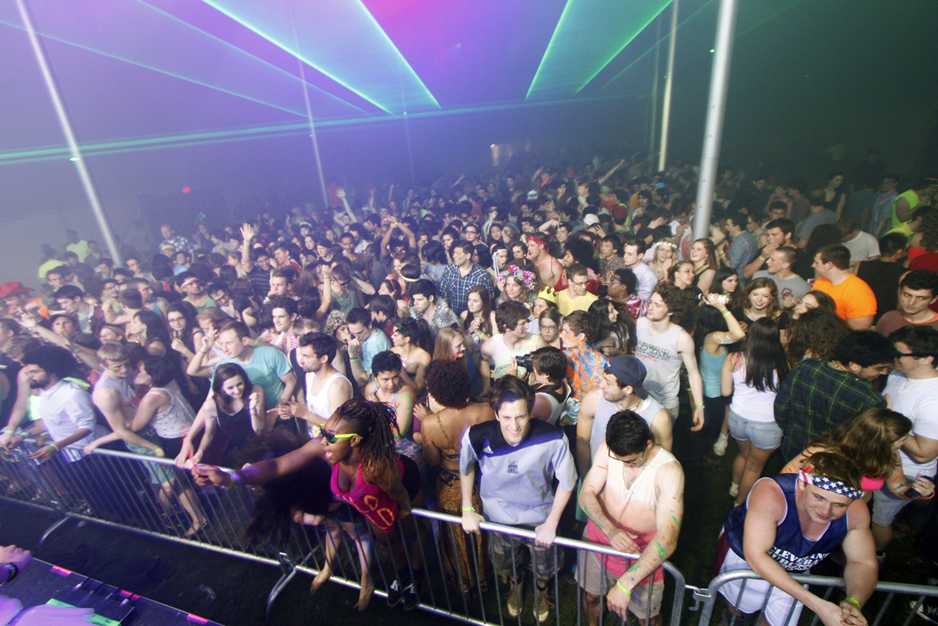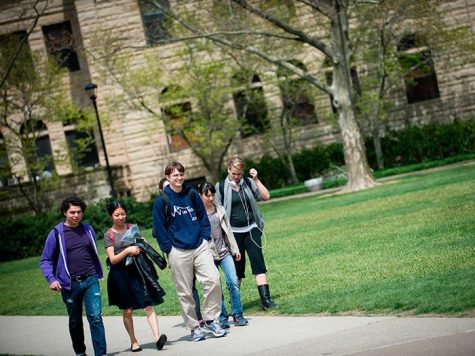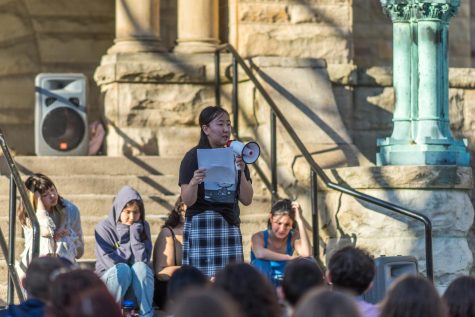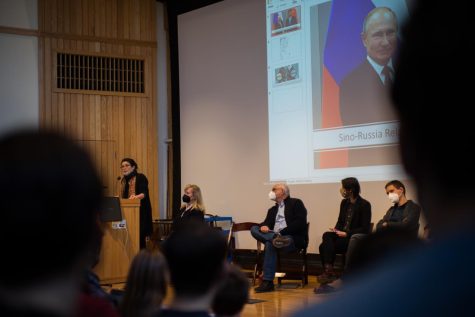Solarity’s Next Generation Sheds Rave Image
Last Semester’s Solarity event, Awaken the Wild, contained lightshows, performances and other features that the College deemed as characteristic of “rave-culture.” The administration specifically prohibited the use of lasers, blacklights, strobes, body paint, glow sticks or fruit slices at the upcoming event.
Solarity may be a nascent organization, but its reputation has grown considerably since Neon Garden, the inaugural event in 2011. And so too has its controversy on campus.
Throughout its operation, Solarity has been dubbed “polarizing,” a trait that students can identify, but not necessarily explain.
“It’s hard for me to say, because I think I’ve heard things through the rumor mill and I’m not sure which ones are credible and which ones aren’t,” College fifth-year Arielle Lewis-Zvala said, who attended Neon Garden.
And according to College Senior and Solarity Co-Chair Jesse Goldberg, the controversy is largely unfounded.
“At Oberlin,” Goldberg explained, “an image gets put on you. And that’s been on of the most frustrating things for me, this image that’s been superimposed onto us as to who we were, what we were doing, who we were targeting. All this came from outside of the group. We never really tried to have an image but one was developed –– yeah, they’re a bunch of white kids doing this rave things. I’ve heard a lot of different things, there’s a lot of misinformation. Those negative images were put onto us.”
According to College Senior and head of Solarity’s marketing Dan Meltzer, the organization has resolved to change that very image. One initiative, Meltzer noted, is a recent collaboration with the Sexual information Center.
“A big criticism of Solarity is that people noticed a lot of non-consensual sexual activity at the events,” Meltzer said.
“We took it upon ourselves to minimize that this year, because we want it to be a safe space. We’ve been working with the SIC. Every Solarity member was peace keeper trained, the [same] training that the SIC members so for safer sex night.”
“I’ve been trying to figure [the polarity] out,” Meltzer added, “and I think a lot of the objections to Solarity comes from a financial standpoint. [We receive a lot of money] and that’s an objective truth.”
Meltzer and Arianne Walker, co-chair and treasurer both noted that SFC has a lot of money to give, and students often aren’t privy to their procedures.
“The College has a lot of money to [grant] organizations,” Meltzer noted.
That said, students remain dubious about Solarity’s finances, which are a matter of public record.
“I find it interesting,” said College senior Jack Ratner, “that they get the most funding on campus, yet still charge a fair amount for events.”
In past years, Solarity has charged $10 per event, but for the upcoming “Submerge” they cut the cost nearly in half, charging attendants $6.
And while ticket prices may be lower, the group’s funding remains high. According to College senior and Treasurer Ariane Walker, Solarity received approximately $20,000 from the Student Finance Committee for the fall semester.
Financial questions aside, some students are discouraged by Solarity’s general character, or “vibe.”
“They have this entrepreneurial business vibe, which is great for people who are going into that world, but isn’t necessarily identifiable for other people who work in social justice or community-based work,” Lewis-Zvala said. “I think they have an extravagant vibe that I’m turned off by. You have all this money, what else could you be doing with it?”
Submerge also signifies a change in leadership: the three progenitors graduated last spring, their rave-centric legacy in tow.
“Now that Evan [Baker] Dan [Cook] and Eli [Clark-Davis] have all graduated –– it was always their creative image. And they were the ones who were more closely held to raves and electronic dance music, things like that. Me and [the other co-chairs] we don’t really [care] about that. It’s not our bag, it’s not what we’re trying to do, that’s not what we want,” Goldberg noted.
According to Walker, the group emanated “rave” so robustly, that the administration intervened: they approached Solarity at the beginning of the semester and established some prohibitions.
“There’s a funny thing around raves,” Walker said. “The reason that Solarity has been perceived as a rave is because the artistic revision has been rave-like in terms of light design … And we’ve [recently] worked really closely with the administration and set some parameters. We’re not allowed to have lasers, backlights, strobe, body paint, glow sticks or fruit slices.”
Both Goldberg and Walker emphasized that Solarity intends to change its image by showing students, not just telling them.
“There certainly wasn’t an image objective when we started,” said Goldberg when asked about Solarity’s promotional mission. “The vision for the Neon Garden came from [our founders] because they were all for the rave bit. When we started, we weren’t thinking about image at all. We just thought about what we were doing.”











